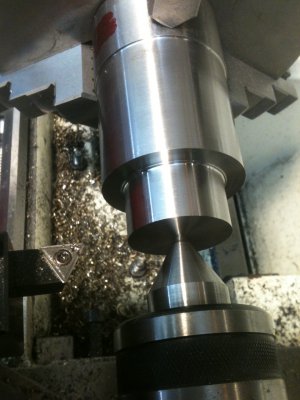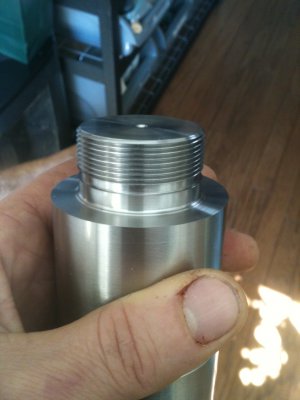- Joined
- Mar 14, 2013
- Messages
- 736
Do you guys think that "the pounding of dynamic braking" hurts a non gear driven lathe.
When you say "dynamic braking" are you talking about a deceleration stop of say 3 seconds, or are you talking about one with a breaking resistor added to the system?
Take for example, My Oliver 159 wood lathe, I just put a VFD on. It uses a reeves drive.
And I may put one on my Logan 10" lathe, it is just v belt to the flat wheel on the jack shaft, and flat belt from the jack shaft to the spindle. It does have back gears.
Thanks,
Tony
When you say "dynamic braking" are you talking about a deceleration stop of say 3 seconds, or are you talking about one with a breaking resistor added to the system?
Take for example, My Oliver 159 wood lathe, I just put a VFD on. It uses a reeves drive.
And I may put one on my Logan 10" lathe, it is just v belt to the flat wheel on the jack shaft, and flat belt from the jack shaft to the spindle. It does have back gears.
Thanks,
Tony
Metric threading certainly seems like a good use for dynamic braking. Still though, adding VFDs to manual lathes is (in certain respects) still in it's infancy. By my accounting, it wasn't that long ago that VFDs were becoming common-place and when they first came out, there was a wave of poeple burning up their old motors because they weren't designed for running at speeds other than 50 or 60 Hz. Now, let's extend that logic just a bit more and ask ourselves if our 1950's design lathes (yes, our modern lathes are pattern variations of mid-1950's technology) were really made to take the pounding of dynamic braking. Don't get me wrong... I don't have all the answers and am figuring this out as I go but, my intuition tells me to do some thinking before proceeding.
When big gears turn small gears and vise-versa, the torque applied and stress on the teeth must be considered. That's just one of the reasons why transmissions have stepped gears in the first place... -So you don't knock the teeth off all the small gears. If you were going down the road in your 6 speed manual transmission at 65 MPH, pressed-in the clutch, shifted to 1st gear and dumped the clutch... Good Bye Car! So what's the difference between that and dynamic braking? -Nothing.
Somone out there probably knows the answers to these things but, often times, people come back and say "I've been doing it that way for years so, it's OK"... -Sorry, that kind of answer doesn't cut it for me. It's a valuable data point but not a good answer.
Ray



